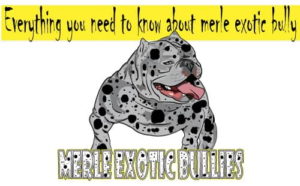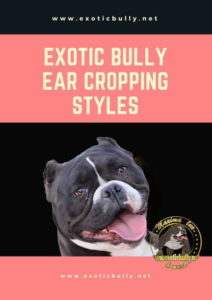The history of the merle coat tone has been limited to a certain quality, which can be related to DNA testing. This is a quality transformation, and merle is a heterozygote of an inadequate prevailing rate, which is the thing that directs the end example of any canine who acquires the quality.
Canines that acquire only one duplicate of the quality will have a merle coat – while pups that receive two copies will be known as “double merle” since they are homozygous as opposed to heterozygous.
Double merle canines run a lot more danger of acquiring health issues alongside the merle coat, including visual deformities and hereditary deafness. Single-merle dogs, or heterozygous, are less inclined to be influenced by such matters.
Another variation of this coat type is cryptic merle, in which just a few patches of the merle design show up. Furthermore, different qualities that fill in as modifiers can make a scope of other merle examples, for example, harlequin merle
Merle is a coat style seen in a variety of dog breeds. As an autosomal, incompletely dominant gene, this unique phenotype is inherited. In a dark or piebald coat with blue or odd-colored pupils, the merle gene develops mottled spots of color and influences skin pigment. “Double merle” animals, a generic word used by dogs that are homozygous of the merle (M/M) trait, are primarily white and vulnerable to many health problems.
When two merles are bred together, the odds of producing puppies that develop health concerns improve. Only a non-merle or non-cryptic Merle dog is advised to be raised with a merle dog. It does not seem that cryptic merle dogs are merle, but they carry the merle gene. Some strong dogs are enigmatic, often referred to as ghosts, merles, and if not vigilant, will generate both merle and double merles.
Merle may influence both coat colors. Merle can also impact recessive red dogs, but the spots are only rarely seen or (if the dog is transparent, recessive red) are not evident at all. In addition, there are variations such as brindle merle.
Merle often modifies the nose and paw pads’ eye color and shading and changes the base coat color. The merle gene changes the black pigment in the eyes, which often transforms the dark eyes into a light, or just half of the eyes into blue. All dark-eyed, blue-eyed, and odd-colored eyes are possible because Merle induces spontaneous changes. Pink and black can be mottled in color on the paw pads and nose.

Genetics:
There is a 25 percent risk per puppy born that they would be homozygous (M/M) for the merle trait when two carriers (M/m) are bred with each other. A considerable proportion of double merle puppies have visual or hearing deficiencies. They are also classified as “double merles.”
A mysterious or ghost merle is a dog who is phenotypically a non-merle (solid colored) or a dog that can go unidentified with tiny merle patches. Animals who do not show the merle phenotype may have the genotype of merle and so bear offspring of merle. These animals are referred to as mysterious merles, as they do not seem to be merles, but merles may be made.
What is an Exotic merle bully?
A Merle Exotic Bully is essentially an Exotic Bully that comes in the form of a color named merle. Merle is characterized as a mixture of coat color and pattern that can be seen in many different dog breeds, resulting in a coat with mottled color patches across an otherwise solid colored or piebald skin. Merle coloration can also be accompanied by genetic health conditions in the Exotic bully, and we may later expand on this in more depth.
Does the merle color appear naturally in the Exotic bully breed?
The topic of whether Exotic merle bullies emerge spontaneously rather than as a consequence of the incorporation of unique genes bearing the merle markers (from other dog breeds) is one that is the subject of some argument; many merle Exotic bully breeders would firmly claim that inside their breed lines, the color does and does occur naturally.
Although genetic defects (such as those contributing to new or odd colors and other characteristics) can and do occur spontaneously in dog lines in all kinds of purebred breeds, this is exceptionally uncommon. Even if this has potentially existed among Exotic bullies at some stage in the past and contributed to a merle’s birth, this form of random genetic mutation does not occur frequently enough to result in the natural creation of merle strains in large quantities within the Exotic bully breed.
Merle is not a naturally existing color within the breed. According to Kennel Club and formal English bulldog breed organizations, considering Bulldogs( breed who is very present in each exotic bully blood) that prioritize breeding for health and breed enhancement, it should not be found in the species’ actual dogs after being added to the bloodline through outcrossing. Due to selective breeding, Merle Exotic bullies are created to obtain this unusual color. The merle color is not known to be a naturally occurring occurrence within the breed.
Merle Exotic Bully health issues
In addition to their merle coloration, Merle Exotic bullies have a far better risk of inheriting several conformation faults and genetic weaknesses, which is the source of the group’s primary arguments to include the color within the group all.
The Exotic bully breed (regardless of the color of its dogs) is closely related to risk factors for a wide variety of inherited health disorders, from BOAS or brachycephalic obstructive airway syndrome to reactions to the skin and coat, patellar luxation, eye issues, and heart defects, and many others.
Due to the pups’ heads’ relative size than the dam’s pelvis, Exotic bully puppies typically have to be born via C-section. Additionally, some Exotic bully often needs support with breeding due to the narrowness of the hips of the bitch.
Several health conditions apply directly to the breed that is merle-colored. However, that can be acquired alongside the genes that allow the characteristic merle coat color to be found in the first instance of Exotic merle bully.
In Exotic bully, the merle color correlates with an elevated likelihood of inherited deafness that may involve either ears or only one ear, which can be partial or absolute. Also, blindness or bad eyesight can suffer from Exotic bullies with merle coloration and may have eyes abnormally shaped or poorly created.
In all Exotic merle bullies, neither deafness nor vision issues arise automatically. Still, they develop in a large enough number of merle dogs to be deemed to pose a danger to the quality of life of the dogs afflicted and the species’ welfare.
Merle coloring may often lead to a loss of pigmentation in some parts of the eye, as well as to an elevated chance of skin cancer or hypersensitivity of light in dogs.
Does Double Merle double the risk?
While there are significant possible health implications for Exotic merle bully that cannot be minimized or dismissed in the zeal to find the correct dog, only these health issues impact a comparatively small proportion of all Exotic merle bully.
The risk factors escalate dramatically when it comes to double merle Exotic bully. Even if Exotic merle bully is dangerous in terms of their wellbeing, this risk goes into overdrive when double merle is involved.
A double merle Exotic bully inherits the broad M merle gene instead of only one on both sides of their parentage. A double-merle coat would be shown for all dogs that inherit two versions of this gene. Most double-merle Exotic bullies acquire extreme vision and hearing disorders. Around a fifth of those pets would be both entirely deaf and completely blind.
Due to their correlation with health deficiencies, breeding merle Exotic bullies can be highly problematic. Still, a double-merle Exotic bully is a much worse concern objectively. This is because those pets typically have a lousy standard of life and a significantly elevated likelihood of a range of complicated health issues.
What do bulldog breed organizations say about merle bulldogs?
There are many various clubs and advocacy organizations of the bulldog breed. Several of them are known as associates or members by the Kennel Club, collaborating with the Kennel Club to track and enhance the breed’s welfare and standards.
No credible Kennel Club associated bulldog breed association recognizes the raising of merle bulldogs promotes this activity or suggests merle bulldog as good pets, and under the organization’s code of ethics and guidelines on reasonable practice for breeders and puppy buyers, breeding or purchasing merle bulldogs is typically expressly prevented or prohibited.
The Bulldog Breed Council explicitly cites Merle as an immoral color within the breed. Therefore, it can never be promoted or rewarded; all recognized associations and geographic member clubs of the breed council have the same policy.
How common are merle Exotic bullies?
It is apparent that rare or unusual-looking dogs by puppy buyers are in high demand. This, in essence, enables breeders to breed dogs selectively to satisfy this demand, even often at the cost of good health and enhancement of the breed.
Merle Exotic bullies, frequently quoting lengthy and impressive-sounding ancestries featuring various handsome-looking merle pets, are widely marketed as being exceedingly unusual, uncommon, extraordinary, or otherwise distinctive.



